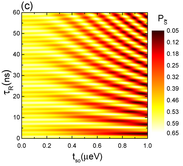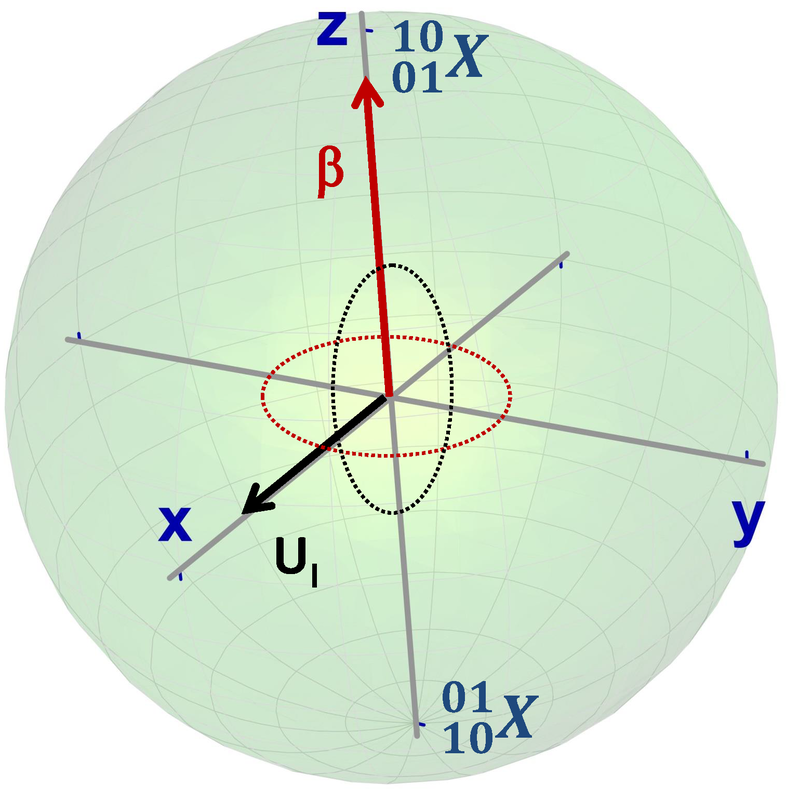Selected Physics Research Projects
Below is a compilation of some of the physics projects I have worked on. The project topics are varied in scope and mostly revolve around computational approaches to quantum optics, optical response of semiconductor devices and the design of exciton and spin qubit control mechanisms in quantum dot arrays. Following each project I added a link to the corresponding research pre-print or publication when applicable.
Motivation and Aims
Quantum dot molecules are promising building blocks for semiconductor-based approaches to scalable quantum information technologies. The controllability of their exciton spectrum, and the selective excitation of the spin and charge degrees of freedom, make exciton-based coherent control protocols a viable route for the implementation of universal quantum gates.
In this project, we implemented a Rosen-Zener model and performed numerical and analytic non-perturbative calculations based on the Bloch-Feshbach projection operator formalism, to uncover the effects of coherent population trapping of indirect excitons in QDMs. In particular, we characterized the signatures of the optical Stark effect on the spectrum and dynamics of spatially indirect excitons in laser driven quantum dot molecules.
Computational Techniques
To solve the problems in this project I used the following numerical and analytical techniques : 1. Rosen-Zener model, 2. Bloch sphere representation. 3. Density matrix formalism, 4. Eigenvector spectral decomposition, 5. Dimensionality reduction by projection operators, 6. Markovian master equations. 7. Quantum trajectories, 8. Quantum gates.
Findings
The simulation results show that the exciton spectrum contains an avoided crossing between two spatially indirect excitons defining a qubit, which is resilient against decoherence arising from strong excitation power and dissipation-induced broadening effects. In addition, we show that it is possible to perform an all-optical implementation of indirect-excitonic qubit operations, such as the Pauli-X and Hadamard quantum gates, across two defined axis of the Bloch Sphere.
References
1. https://arxiv.org/abs/1601.05060
2.http://meetings.aps.org/Meeting/MAR15/Event/235941
| Arxiv Preprint |
Motivation and Aims
Electron spin qubits in double quantum dot devices are one of the building blocks of quantum computing at the nanoscale. In this project, I performed a computational simulation of the control of singlet-triplet spin qubits applicable to GaAs (gallium arsenide) and Si/Ge (silicon-germanium) coupled quantum dot devices. The aim of the project was the engineering of the qubits' coherent dynamics in the presence of quantum noise due to hyperfine interactions with the nuclear spins of the host material.
Computational Techniques
To solve the problems in this project I used the following numerical and analytical techniques : 1. Hamiltonian matrix formalism 2. Density matrix formalism, 3. Eigenvector spectral decomposition, 4. Dimensionality reduction by projection operators, 5. Markovian master equations, 6. Statistical estimation theory of return probabilities.
Findings
The simulation results show that the spin-orbit interaction associated to quantum tunneling processes that flip the electron spin have well defined signatures. These signatures are characterized by a frequency shift and Fourier amplitude modulation of the Rabi flopping dynamics of the singlet-triplet qubits S−T0 and S−T+. The results of the dimensionality reduction procedure show that the aforementioned effects originate from the interplay between spin-orbit interaction and processes driven by the hyperfine interaction between the electron spins and those of the GaAs nuclei.
References
1. https://journals.aps.org/prb/abstract/10.1103/PhysRevB.95.195407#fulltext
2.https://arxiv.org/abs/1607.07852
| Arxiv Preprint |
Copyright © 2021 Juan E. Rolon

